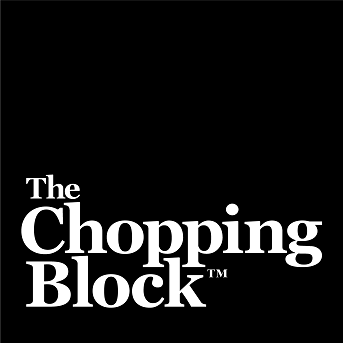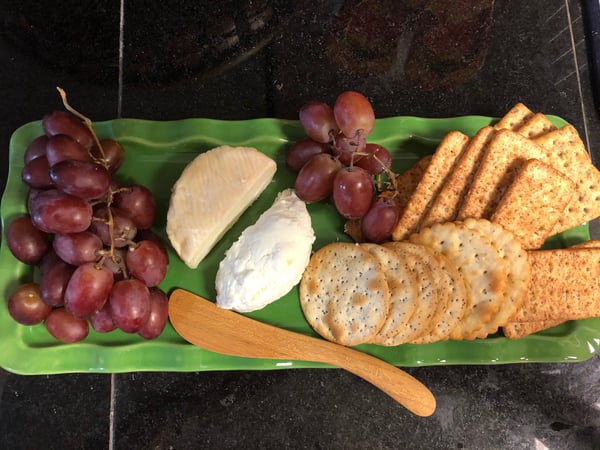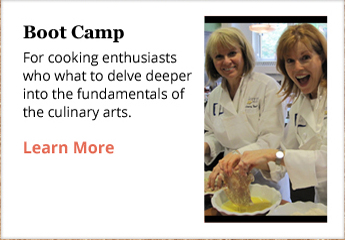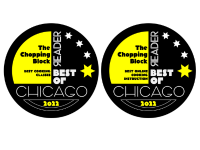When you've been in business for 23 years like The Chopping Block has, we get to witness success stories of former employees who have branched out into their own businesses. It's so cool to see someone you worked with many years ago finally achieve their dream job. That happened with Veronica Pedraza of Blakesville Creamery this year.
Veronica worked at The Chopping Block back in 2006 as a class assistant, but her passion was always cheese. She left TCB to begin her cheesemaking journey as an apprentice for Sweet Grass Dairy before moving on to Jasper Hill Farm as their creamery manager. In 2012, she began making her own cheeses at Meadowood Farms in upstate New York where she won numerous awards.
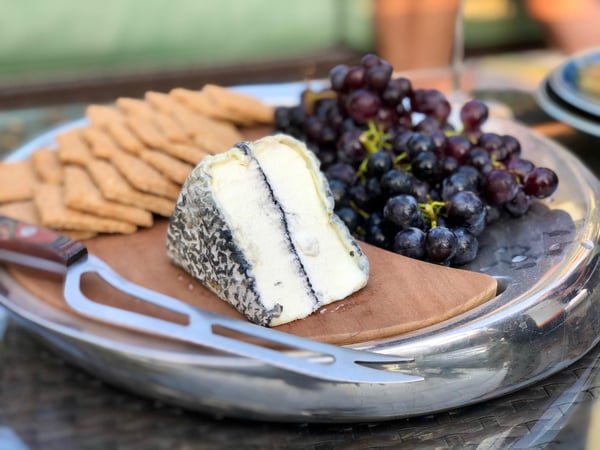
Photo courtesy of Blakesville Creamery
But about three years ago, Veronica was approached with a business plan she simply couldn't turn down. Blakesville Dairy Farm is a goat dairy farm that uses sustainable farming practices in Port Washington, Wisconsin right on Lake Michigan. With over 1200 goats on the farm, the next step for the owner was to make goat cheese. She worked with Veronica to develop what Veronica refers to as her "dreamery," spending 4 million dollars to design and build a creamery that took into consideration Veronica's preferred layout and flow. Besides having state-of-the-art equipment and a brand new space that was scalable for future business, Veronica was impressed by the constant supply of goat milk available, which she says is essential to good cheese making.
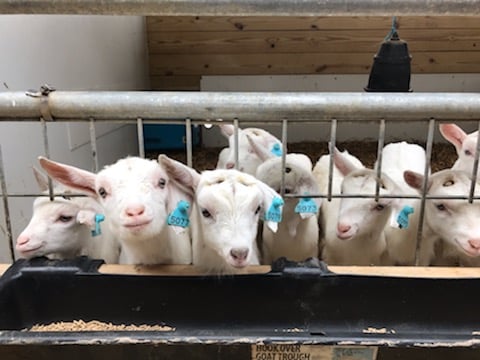
Photo courtesy of Blakesville Creamery
"A lot of goat’s milk cheese made in the U.S. is made from imported frozen curd, and the milk actually comes from France or Mexico. Cheesemakers here mix it with their own milk, but the reason they need to supplement is that there isn’t enough milk to meet the demand for goat cheese in America. What makes Blakesville different is with so many goats, we are able to produce cheese that is made from 100% from our own milk, and you can taste the difference," said Veronica.
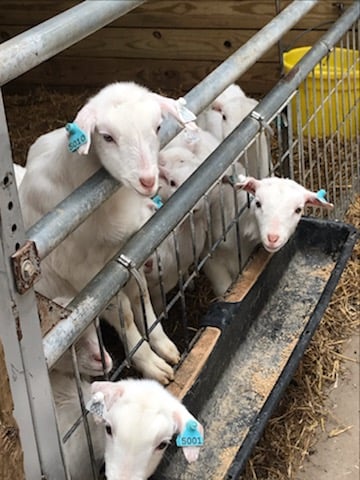
Photo courtesy of Blakesville Creamery
The herd of mostly Saanen and Alpine goats is made up of strong DNA lineage and has achieved the highest standards in animal husbandry. Veronica says the creamery's primary goal is to humanely raise healthy, happy goats that produce the highest quality milk.
The creamery focuses on goat's milk cheese for now, but Veronica would like to see sheep's milk cheese added one day. That's because it's her favorite milk to work with. "It makes the best cheese, it's richer, you get a better yield on it, and it's pretty much indestructible. Goat's milk is actually the hardest milk to work with because it has the weakest composition of all of the milks. It has a very delicate curd which makes transforming it into cheese challenging but also very rewarding," said Veronica.
I was lucky enough to sample two of Veronica's cheeses recently, the fresh Chèvre and Lake Breeze.
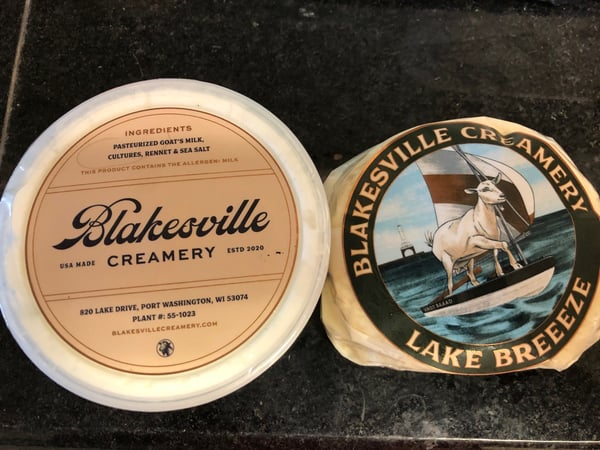
Blakesville Creamery's Fresh Chèvre
Silky and light, yet rich and creamy, Blakesville Creamery Fresh Chèvre brings the bright tang you expect from fresh goat cheese backed up with a decadent buttery fluffiness.
Veronica says the cheese-making process for this fresh goat milk cheese is pretty straightforward. "The milk cultures for about 24 hours, and it slowly sets up. The next day, we drain the curd. The following day, we salt the cheese, and it's ready to go. It's a very quick process," said Veronica.
Uses: Blakesville Creamery Fresh Chèvre can be used in any application that calls for fresh goat cheese. Spread it on crostini, serve simply with crackers and olives, blend with fresh herbs for bruschetta, dollop on pizzas or pastas, combine with fresh berries for dessert. For best flavor and texture, allow to come to room temperature before serving.
Pairings: Blakesville Creamery Fresh Chèvre pairs beautifully with wheat beers, hard cider, fresh crisp white wines, Italian spritzes, and tart fruit sodas.
Shelf Life: Up to 4 weeks unopened
Ingredients: Pasteurized goat milk, cultures, rennet, salt
How I used it: In addition to featuring on a cheese board with the Lake Breeze, I added the chevre to sautéed beet greens and roasted beets. It's a beautiful, bright plate as the cheese absorbs the beet juice and turns a little pink. The creaminess of the cheese perfectly complimented the bitter greens and earthy yet sweet beets.
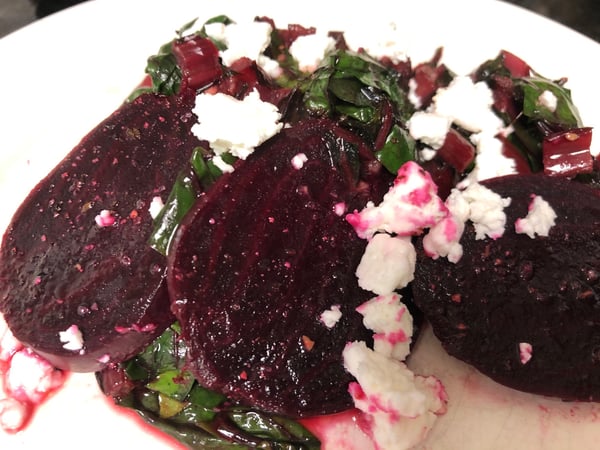
How others are using it: Chefs are getting creative with this chevre by stuffing pasta with it, using it on sandwiches, in crepes, on bagels, in salads, and as a base for gnocchi. Coalfire Pizza has two goat cheese pizzas on their menu featuring Blakesville cheese, and Pretty Cool Ice Cream even creates a Midwestern black raspberry goat cheese pop with the chevre.
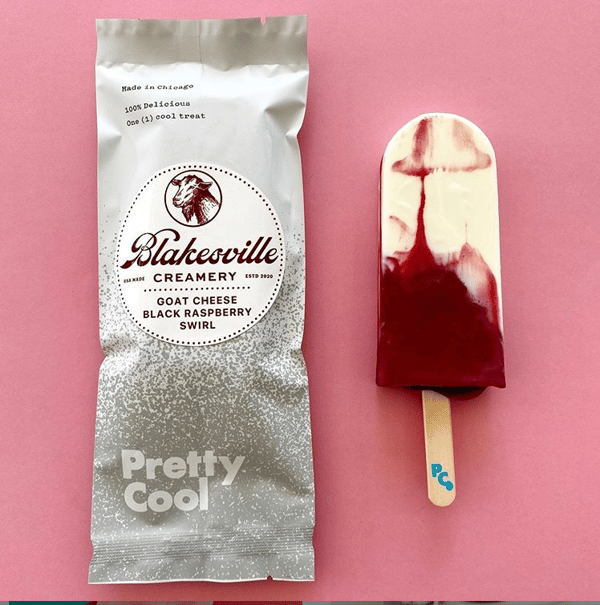
Photo compliments of Pretty Cool Ice Cream's Instagram
Blakesville Creamery's Lake Breeze
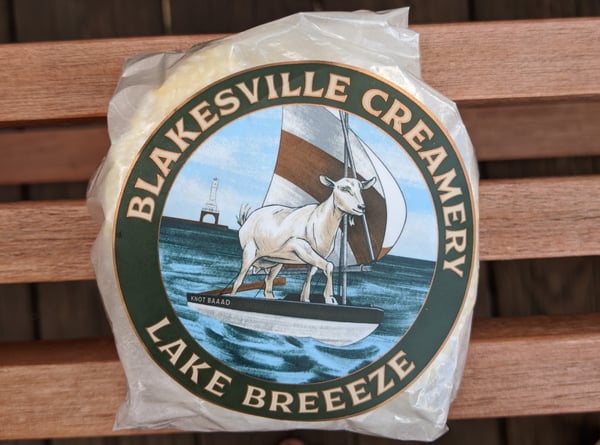
Photo courtesy of Blakesville Creamery
With a dense, velvety texture, and an incredibly thin rind, Lake Breeze brings a mineral tang and an herbal earthiness reminiscent of Loire Valley cheeses.
Veronica says the process for making this cheese is similar to the chevre, but additional cultures are added to help with the rind development. "The cheese is drained into the little round form it comes in. It's dried, salted and aged for 2-3 weeks. Then it gets wrapped up and shipped off," said Veronica.
Uses: Blakesville Creamery Lake Breeze cuts neatly into elegant portions for great presentation on cheese boards or picnic platters. It's a pure ivory color and delicate flavor and aroma make it fit into most cheese situations. For best flavor and texture, allow to come to room temperature before serving.
Pairings: Blakesville Creamery Lake Breeze pairs beautifully with crisp white wines and sparklers, hard ciders, natural roses and reds, and fizzy cocktails. It goes great with olives, old world salamis and jamon and crunchy crudites.
Shelf Life: Aged 3 weeks
Ingredients: Pasteurized goat milk, cultures, rennet salt
How I used it: Simply put this cheese on a cheese board (left in the photo below, chevre is on the right) and enjoy it in its purist state. Veronica told me a story of a similar style cheese she had made before at Meadowood Farms and one chef told her he wanted to deep fry it. Don't. Do. That.
Blakesville Creamery's Saint Germain
A third cheese that I haven't yet tasted but can't wait to get my hands on is Veronica's "newest oldest cheese." It's a cooked and pressed curd tomme with a natural rind. This is a cheese that is aged anywhere from two to six months, and Veronica describes the texture as semi-firm with a natural rind. "I use a Savoie blend of cultures and it has a sweet and nutty taste. It's more like an Alpine-style cheese," said Veronica.
So, where can you get these beautiful cheeses in Chicago?
Here's a list of retail vendors:
- Local Foods
- Bungalow by Middlebrow
- Daisies Market
- Working From The Hoxton
- Beautiful Rind
- All Together Now
- Plein Air Cafe
- L&M Fine Foods
- Olivia's Market
- Tempesta
- Plum Market, Old Town
- Potash Market, State St.
- BottlesUp
- Marché, Glen Ellyn
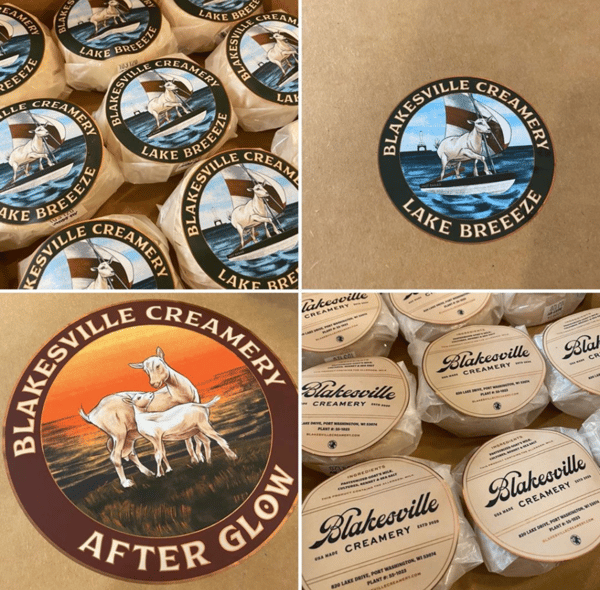
Photo courtesy of Blakesville Creamery
Blakesville Creamery cheese is also available at multiple locations in Milwaukee, Iowa and Michigan, including Feast Cooking School in Fenton, Michigan. Another cool TCB connection is that Feast's Owner/Chef Sean Gartland used to be a chef instructor at The Chopping Block.
And the person in charge of selling Blakesville Creamery cheese now? Yep, she worked at The Chopping Block too! Director of Sales Lisa Futterman was director of our culinary program and a chef instructor at TCB many years ago.
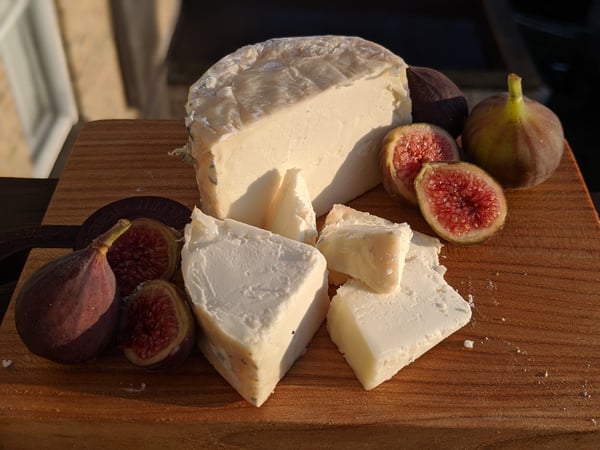
We like to say "cheese brings people together" and in this case, it's reuniting some old friends. Stay tuned for a virtual cheese tasting class with Veronica coming to The Chopping Block's calendar in January 2021.
In the meantime, if you need some lovely wines to pair with these cheeses, check out our selection available online for safe, curbside pickup from Lincoln Square. Our hand-selected wine case special is now available, and I can think of quite of few of these wines that would go lovely with some farmstead goat cheese.
Learn more about our Wine Case Special
